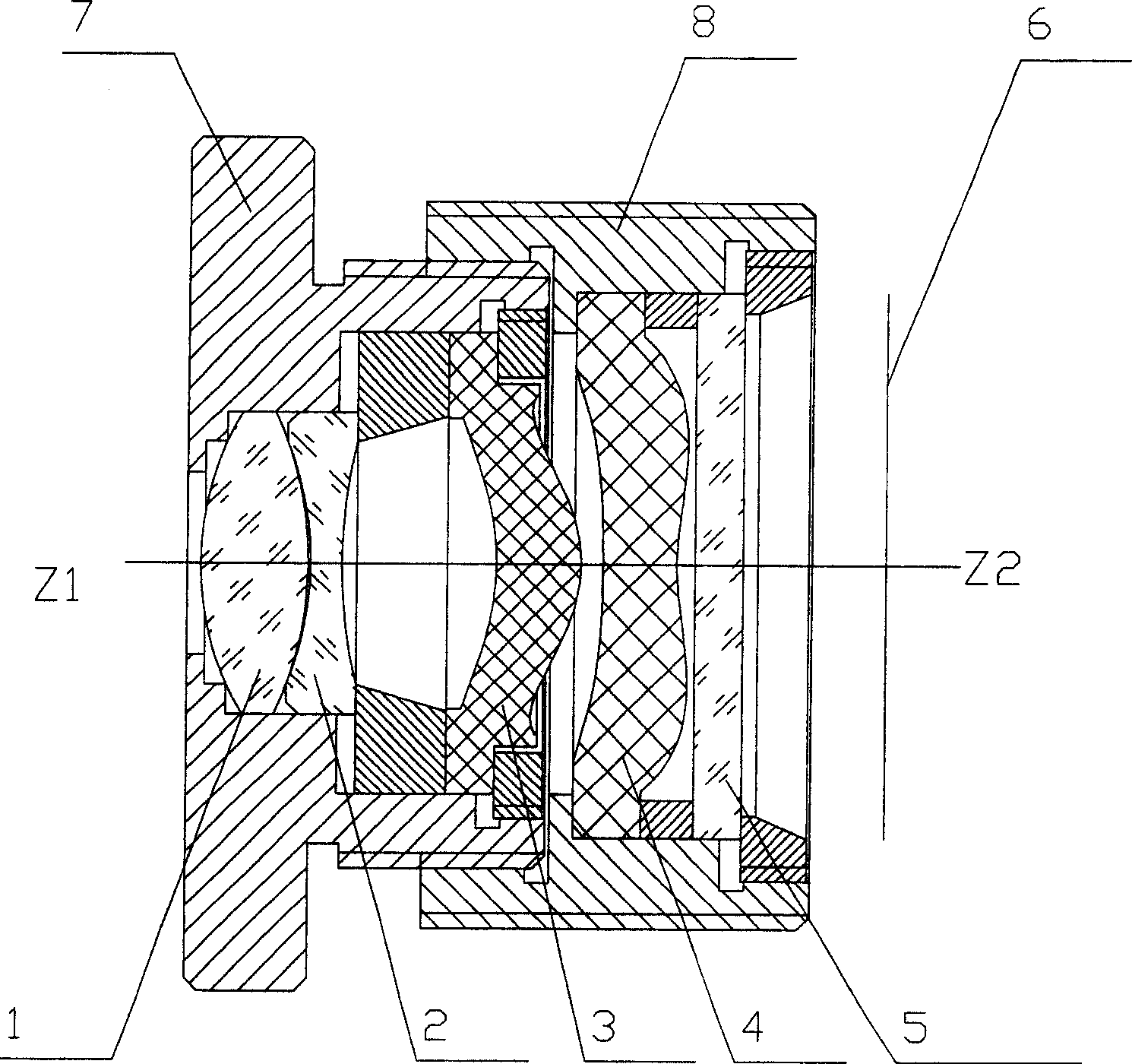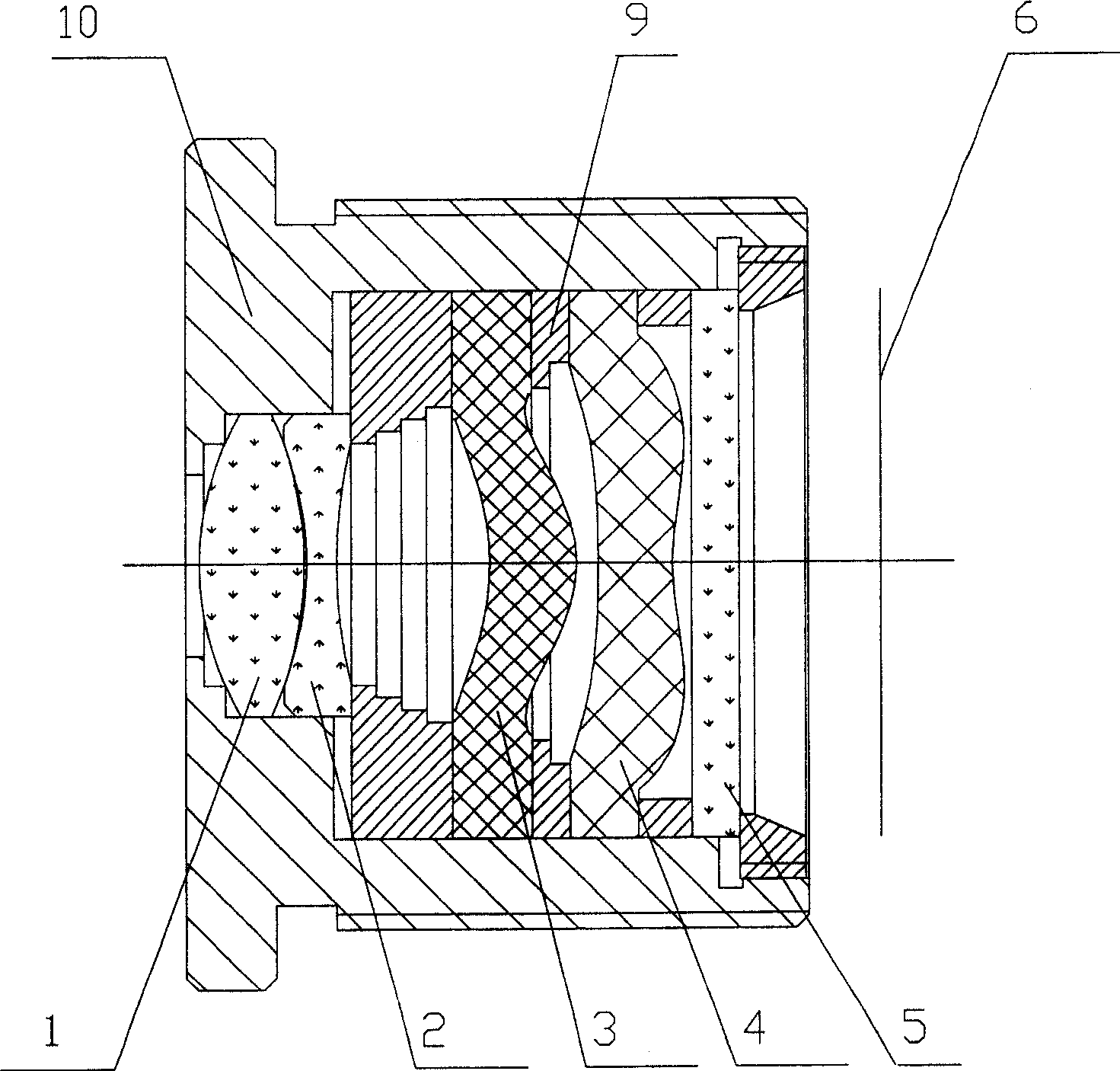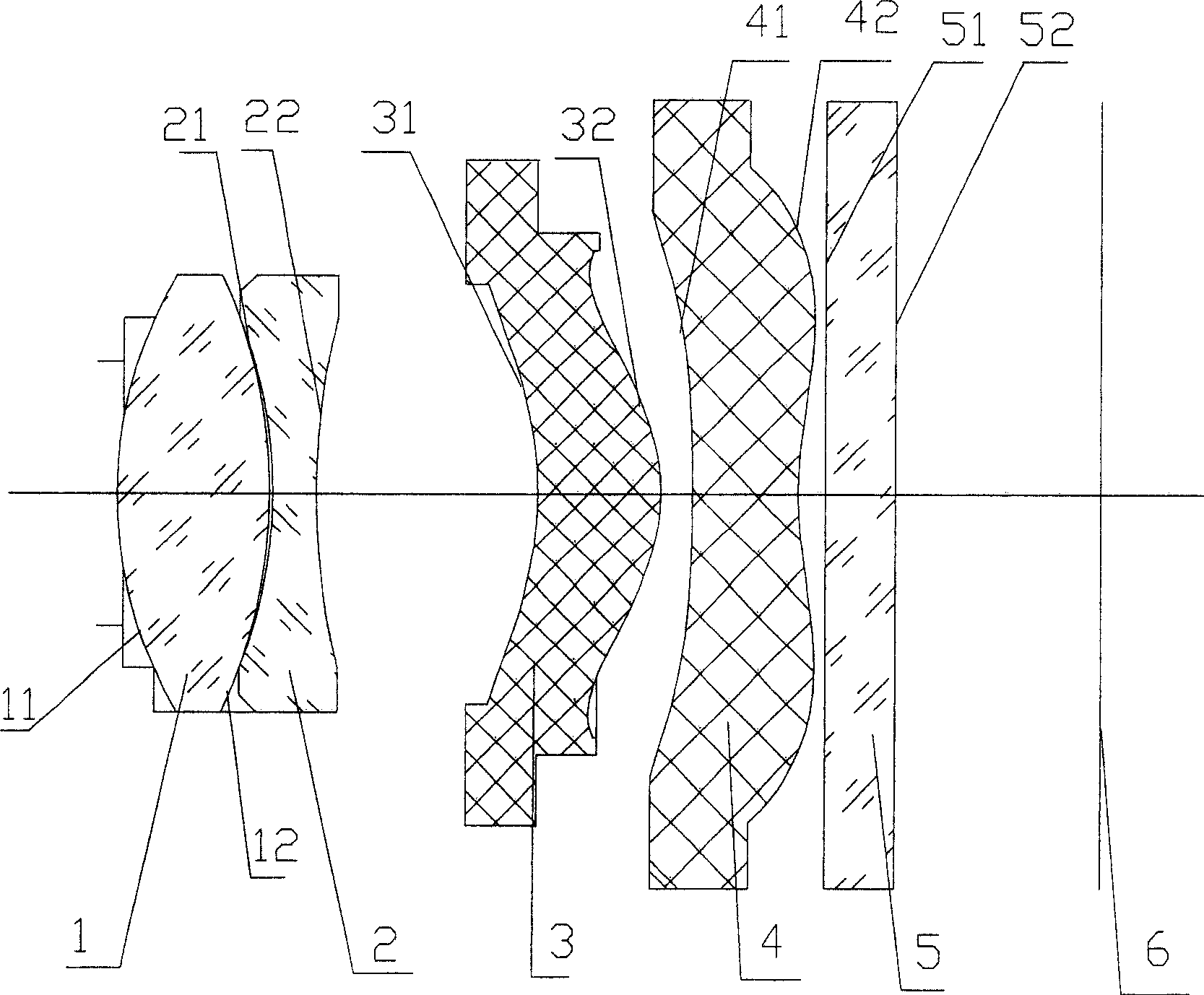Digital camera lens
A digital camera and lens technology, applied in optics, instruments, optical components, etc., can solve the problems of not considering the processing error of plastic lenses, the high precision requirements of aspheric lenses, and the degradation of imaging quality, so as to achieve easy mass production , the number of lenses is small, the effect of easy production
- Summary
- Abstract
- Description
- Claims
- Application Information
AI Technical Summary
Problems solved by technology
Method used
Image
Examples
Embodiment Construction
[0054] The present invention will be further described in detail below in conjunction with the accompanying drawings and embodiments.
[0055] see reference figure 1 , the digital camera lens of the present invention comprises the first lens 1, the second lens 2, the third lens 3, the fourth lens 4, and the plate glass 5 sequentially from the object side, wherein Z1 represents the object side, Z2 represents the image side, and the digital camera lens It also includes a diaphragm before the surface of the first lens 1, which functions to limit the total amount of light entering the lens, and also has a plate glass 5 on the side of the fourth lens near the image side, which acts to coat a layer of light on its surface. The infrared cut-off filter is used to cut off all infrared rays whose glass length is more than 645mm. Of course, the infrared cut-off filter can also be coated on the surface of the first lens; a cmos image is arranged on the side of the flat glass 5 near the im...
PUM
| Property | Measurement | Unit |
|---|---|---|
| dispersion coefficient | aaaaa | aaaaa |
| refractive index | aaaaa | aaaaa |
| dispersion coefficient | aaaaa | aaaaa |
Abstract
Description
Claims
Application Information
 Login to View More
Login to View More - R&D
- Intellectual Property
- Life Sciences
- Materials
- Tech Scout
- Unparalleled Data Quality
- Higher Quality Content
- 60% Fewer Hallucinations
Browse by: Latest US Patents, China's latest patents, Technical Efficacy Thesaurus, Application Domain, Technology Topic, Popular Technical Reports.
© 2025 PatSnap. All rights reserved.Legal|Privacy policy|Modern Slavery Act Transparency Statement|Sitemap|About US| Contact US: help@patsnap.com



